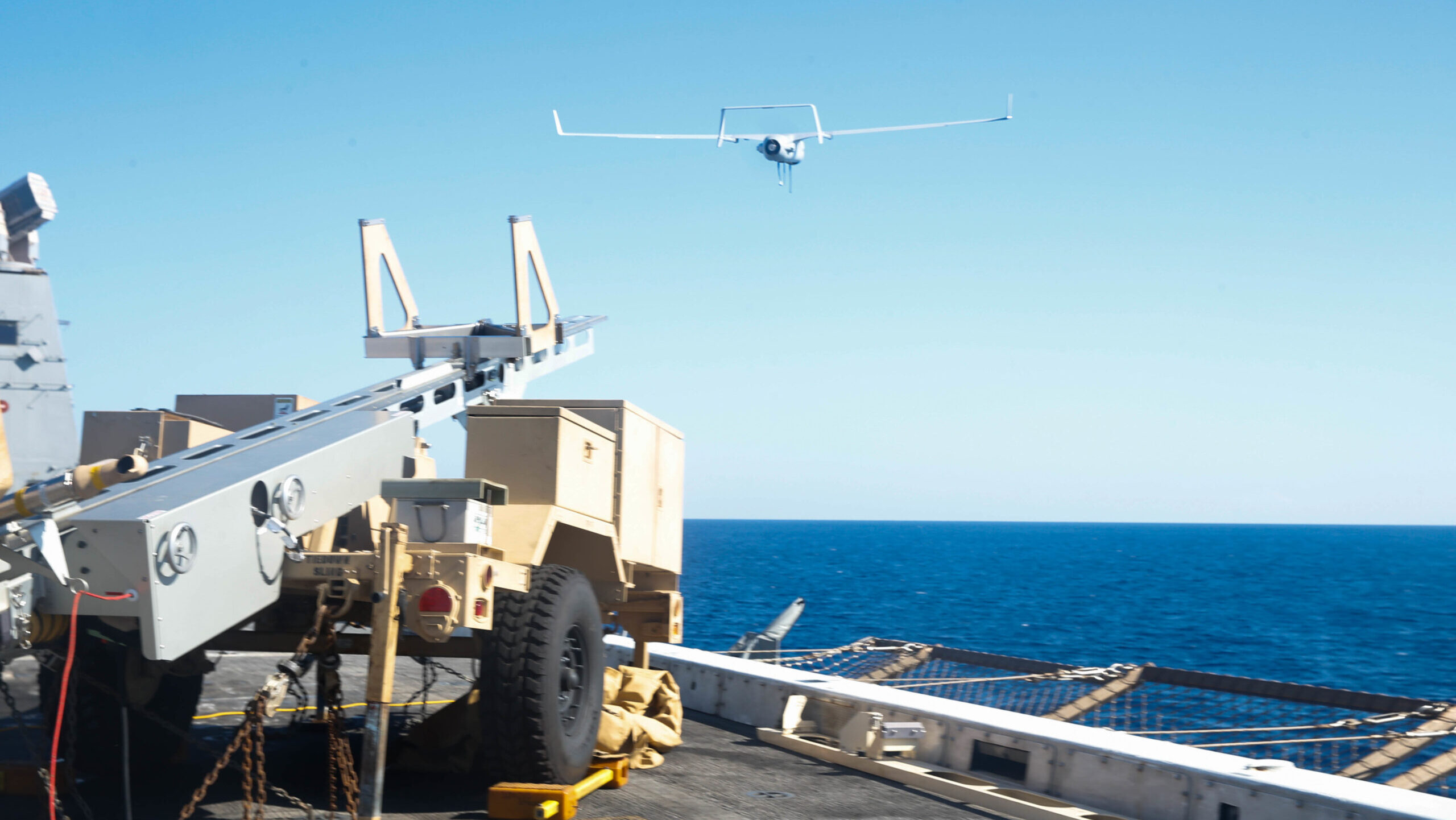
WASHINGTON — The Defense Advanced Research Project Agency is hoping its new ANCILLARY program will provide Navy ship commanders with intelligence, surveillance, reconnaissance and targeting assets under “local” control, with capabilities the legacy RQ-21 Blackjack drone never had.
“There’s a long-standing kind of need for what we call organic, long-range ISR-T — so organic to the ship,” Steve Komadina, the program manager, told Breaking Defense in a June 5 interview.
“Whereas more strategic assets like an [MQ-4] Triton, or even satellites… the local commander on a ship doesn’t really have control of those. And so, he can’t ensure that his mission will get done because there’s not enough of those assets to go around,” Komadina continued.
To try to fill that need, DARPA late last month announced it had selected six companies to advance in its ANCILLARY program, which aims to design a vertical-take-off-and-landing unmanned aerial system capable of operating from a ship deck with minimal sailors required to use it. ANCILLARY is short for AdvaNced airCraft Infrastructure-Less Launch And RecoverY.
DARPA has designated ANCILLARY an “x-plane,” which means it’s not intended to ever enter the Navy’s fleet as designed. Rather, it’s an experimental aircraft DARPA will use to develop the critical technologies needed to make an operational version of ANCILLARY successful.
Komadina said ANCILLARY will strive to meet and surpass the requirements that the Navy and Marine Corps sought out when first purchasing the RQ-21 Blackjack, a group three UAS produced by Boeing. The Pentagon categorizes aircraft into groups — with group one representing the smallest, handheld drones and group five aircraft being similar in size to manned helicopters.
To save on costs and crewing requirements, DARPA wants its new UAS to be operated by no more than two sailors with minimal training, compared to RQ-21 which required up to nine sailors for launch and recovery.
Komadina also said the ANCILLARY program aims to keep associated infrastructure to an absolute minimum to maximize how many drones can be stored on a ship — DARPA is targeting at least 10 aircraft inside the hangar of a destroyer. Less infrastructure also means less time that the aircraft might “foul the deck” — take up space in such a way that prevents other aircraft from operating. (He added that DARPA’s program was conceived of prior to the Defense Department’s Replicator initiative and its impetus is unrelated to the Pentagon’s broader efforts around drone swarms.)
Komadina said that during talks with Naval Air Systems Command, the Navy’s primary agency for buying aircraft, he was told the service’s future operations would require a mission endurance of 18-20 hours and the capability to hold a payload of up to 60 pounds in weight.
The combination of the weight and mission endurance as well as the need for the aircraft to be compact enough for storage and operations on a destroyer is what Komadina characterized as “competing requirements.” As a result, he said, the companies DARPA is working with have all headed down a similar design path.
“[The UAS] takes off with the wing folded, and they hover, and they go up away from the ship, and then they unfold the wing, and then convert to forward flight,” the program manager said. “The companies have all kind of headed that direction to try to meet the requirements that we’re asking.”
The companies selected for the next phase of the program include AeroVironment, Griffon Aerospace, Karem Aircraft, Method Aeronautics, Northrop Grumman and Sikorsky. Komadina said DARPA previously narrowed down abstracts from a pool of 62 companies, originally solicited when the program was first funded in 2022. Flight tests are expected to begin in 2026, according to DARPA’s announcement.
Komadina declined to answer questions related to funding amounts for the program but said of the six vendors selected, four are being funded by DARPA while two are remaining in the competition using their own money.
“I think a lot of the companies see this as a potential path to a new, bigger program for the Navy. And so they wanted to spend their own money to kind of stay in the competition,” he said. “When we go to [the next phase], we’ll go down to just one company that DARPA is paying for, [and] potentially, the Navy may fund a second performer.”
Updated 6/25/2025 at 3:06 pm ET. Subsequent to this story’s publication, DARPA corrected the record to reflect the Pentagon’s policy concerning who may operate certain UAS.